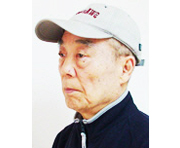The emperor of Japan
The boy who sat one row behind my desk in our elementary school was called Shimizu. He was born on Dec. 23, Showa 8 (1933), the same day the then Crown Prince Akihito, now the emperor, was born.
It was his birthday, a cold December morning. The class teacher, dressed in a full black tailcoat, entered into the classroom solemnly holding an empress wooden box about the size of a shoe box, with his white gloved hands held up to his eye level. All the students stood up at once, not knowing what was happening but displaying good manners.
Still holding the box high up, the teacher called out “Shimizu, step up to the front.” The boy jumped up unaware of what was happening to him but timidly walked forward. Ceremonially, the teacher handed the package to Shimizu and the boy accepted it with both hands, holding the mysterious box at head height, again not knowing what to do next. “You may return to your desk,” said the teacher.
All students watched the fascinating morning ritual. The teacher cleared his throat and announced, “Reverently, this is the royal grant presented to you for the honor of having the same birthday as the Crown Prince. Having you, Shimizu, in my class is an honor for everyone.” All clapped their hands.
I craned my neck and whispered to my friend, “Aren’t you going to open it?” The boy was scared to open the sacred box but told us the next day that it contained a dozen Mitsubishi pencils, a pack of crayons, some erasers and a few notebooks.
We all envied the lucky boy and started bowing deeply to Shimizu when we first saw him in the morning. The Japanese celebrate this day, the Emperor’s birthday, a national holiday, but Christmas day is not a holiday.
The emperor is a ceremonial figurehead under a form of constitutional monarchy and is the highest authority of the Shinto religion because his family are said to be direct descendants of the 2,670-year-old Great God of Amaterasu.
If you are still unconvinced how solemnly Japanese worship their Royal House, please read my translation of the Japanese national anthem, Kimigayo or Your Majesty’s World;
“Your Highness’ province reigned over by the Emperor sustains forever with the eighth of thousands of generations, pebbles gather becoming a large boulder, until moss grows upon it.”
Yes, it’s unscientific; a boulder can become pebbles after many years of erosion and rolling but not the other way around. The Korean anthem is reasonable at least because it sings: “As god safeguards the nation until the East Sea dries out and Mt. Baekdu erodes away …” It’s no wonder that the Japanese gold medalists at the Olympics couldn’t open their mouths to chorus Kimigayo but only moved their lips slightly. But for the majority of Japanese people, logic is not needed in this regard.
President Lee Myung-bak was born in Japan but his parents returned to Korea when he was four years old. The boat they took to return home was shipwrecked off Tsushima Island and the Lees lost all the earnings they had made in Japan. Climbing up the rock of Dokdo (not Takeshima) in August this year and touching the stone carved sign which reads “Korean soil” was considered by many Koreans as a heroic act even though it looked somewhat awkward.
That was fine until President Lee demanded the Japanese “king” to apologize for the comfort women issue. It was a diplomatic blunder that achieved nothing but inflamed unnecessary, hostilities among many Japanese against Korea. As I previously stated, no logic is needed when it comes to matters regarding their Royal Highness.
Very fortunately, however, Cheong Wa Dae belatedly restated that President Lee’s true intention was to say that “It would be far more effective than repeated words of apologies by prime ministers if the most respected Japanese king would say a word, which would solve the whole thorny issue.” That was a beautiful translation, which must have mended the fence at least partially.
It’s a good indication that helps us begin to understand why General Douglas MacArthur exempted the Emperor Hirohito from responsibility for millions of deaths in World War II. <The Korea Times/Nam Sang-so>

























































